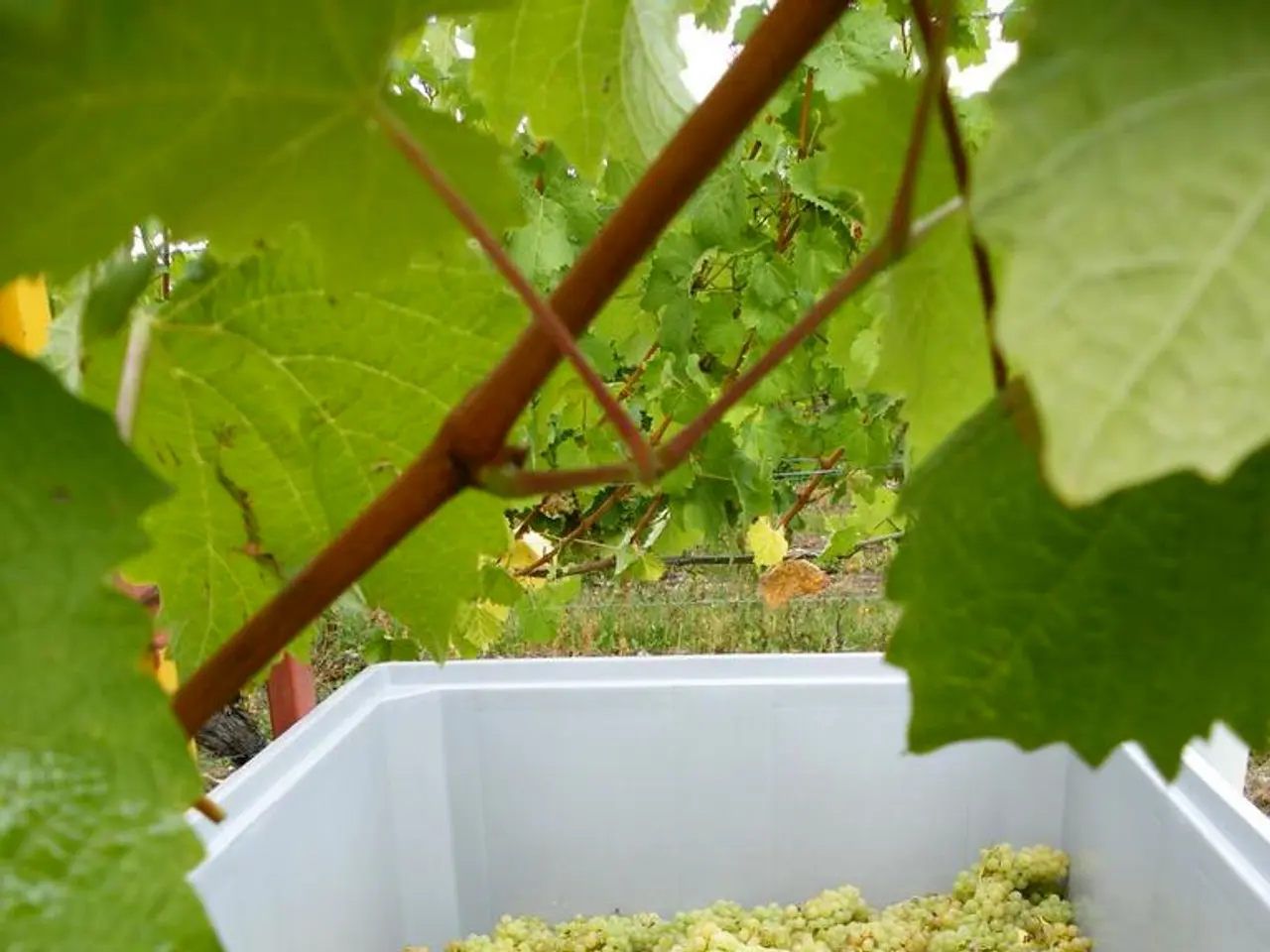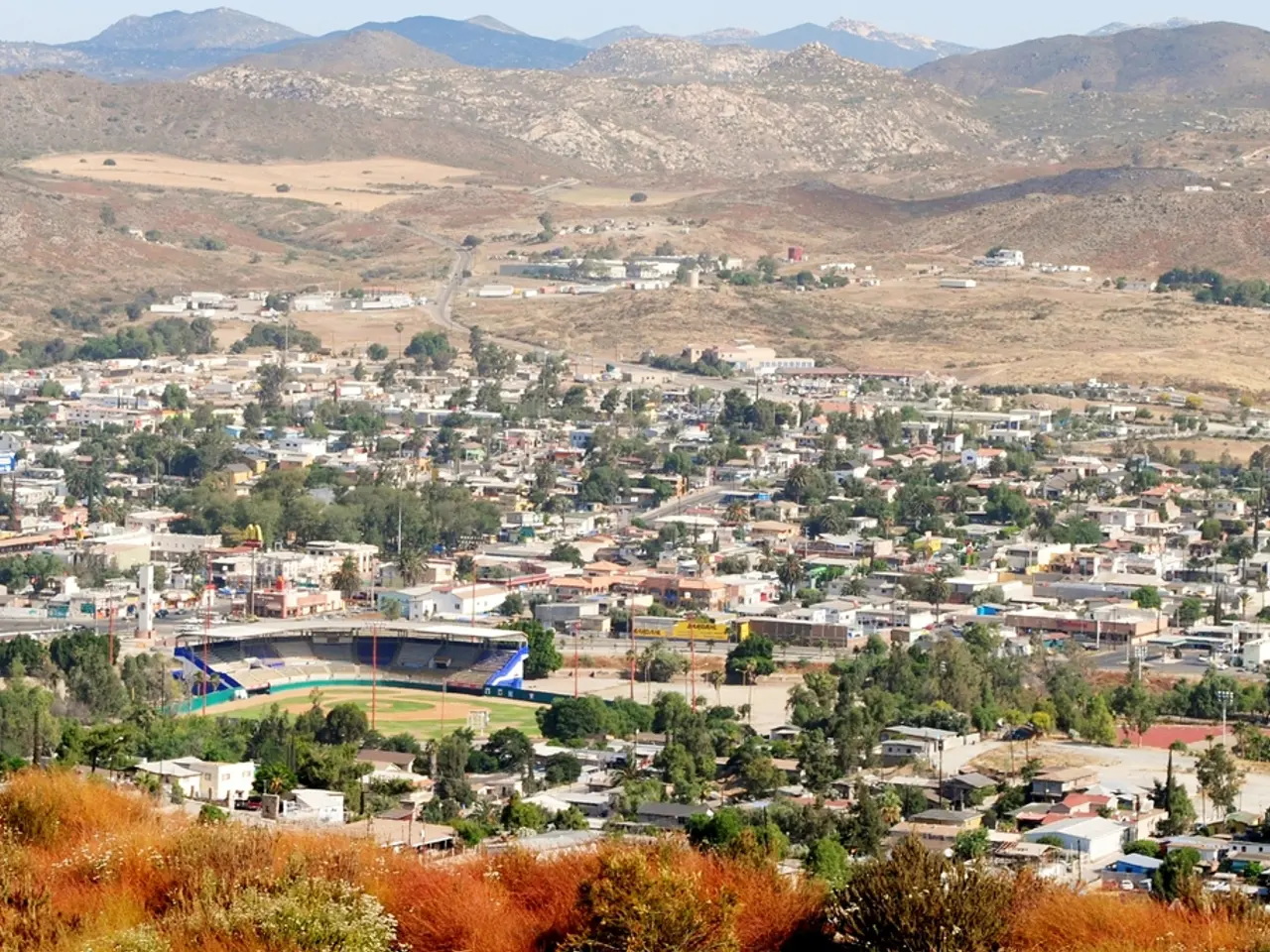Drought-stricken grape harvest: Vineyard yielding petite grapes and yellowing foliage - Struggled vineyard produces miniature grapes with yellowed foliage due to severe water shortage.
In the heart of Bavaria, the wine-growing region of Lower Franconia is facing unprecedented dry conditions, with the German Weather Service reporting that only 20 to 40 litres of rain fell per square meter in June. This has been a particularly dry period for the region, as data from March to May also indicates a significant departure from the climateological average across Bavaria.
The "Climate Report for Lower Franconia" by the University of Würzburg and the Climate Factsheet for Lower Franconia by the State Office for the Environment predict less rainfall in the wine-growing regions, and it is evident that this trend is affecting the vines. The mid-mountain ranges of Spessart and Rhön receive more rainfall compared to the wine-growing regions, which are experiencing less frequent precipitation.
Young vineyards in Franconia, with their shallow root systems, are particularly vulnerable to these drought conditions. To combat this, experts recommend specific irrigation strategies. Frequent, moderate irrigation is preferred over infrequent heavy watering, as it helps maintain adequate moisture in the upper soil layers where young vines predominantly extract water.
Drip irrigation systems, which deliver precise amounts of water directly to the vine roots, minimizing water loss through evaporation or runoff, are also favoured. Applying water early in the day or late in the afternoon reduces evaporation and increases water use efficiency during droughts.
Soil moisture monitoring is another crucial aspect, guiding irrigation timing to avoid both water stress and over-irrigation. The use of mulches or organic amendments can supplement irrigation efforts by improving soil water retention around young vines.
However, not all vineyards in Franconia have the infrastructure for drip irrigation from storage basins, leaving many reliant on natural rainfall. As the main harvest is expected to begin in early September, farmers and winemakers are hoping for regular rainfall to ensure a bountiful yield.
The current drought conditions have led to issues such as chlorosis, a yellowing of leaves caused by a lack of reserve substances in the wood of the vine. This can affect the yield of the vineyards. While the grapes in the Franconia wine region are currently very healthy, according to viticulturist Bock, they have reached the size of a pea, which is smaller than usual due to the dry conditions.
Despite these challenges, Bock remains optimistic, stating that the grapes are healthy and the yield could still be good, depending on the weather conditions in the coming weeks. As climate predictions suggest that it will become even drier in Lower Franconia in the coming decades, it is crucial for the region's winemakers to continue exploring and implementing effective irrigation strategies to ensure the sustainability of their vineyards.
[1] Climate Report for Lower Franconia, University of Würzburg, 2021. [2] Climate Factsheet for Lower Franconia, State Office for the Environment, 2021.
- The University of Würzburg and the State Office for the Environment, in their respective climate reports, have predicted less rainfall in the wine-growing regions of Lower Franconia, which aligns with the trends observed due to climate-change and environmental-science.
- In response to the current dry conditions, experts recommend the implementation of specific irrigation policies, such as frequent, moderate irrigation and the use of drip irrigation systems, which can help address the challenges posed by weather-forecasting.
- As the climate in Lower Franconia is expected to become even drier in the coming decades, it is crucial for the community policy to consider and support the adoption of these employment policies aimed at the implementation of effective irrigation strategies, ensuring the sustainability of the region's vineyards.








